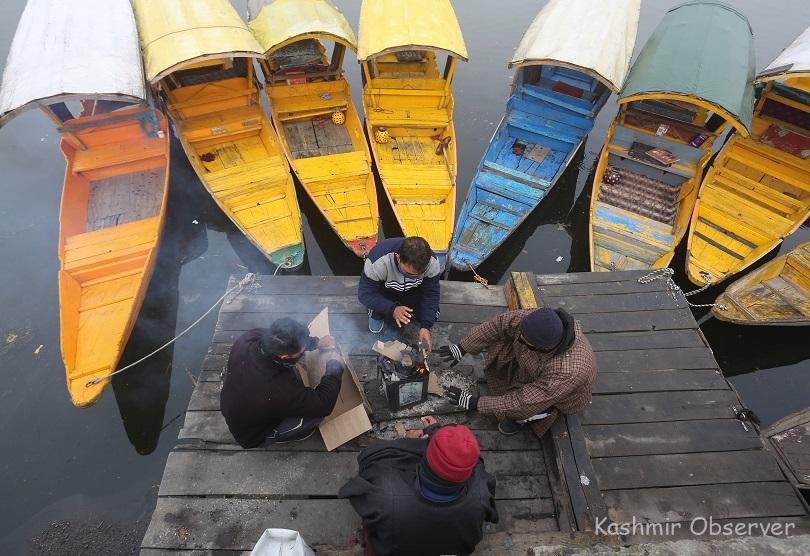
Srinagar- Cold wave across Kashmir intensified on Tuesday as the temperatures fell several degrees below the freezing point, a day ahead of Chilleh Kalan or Chilla-i-Kalan, the 40-day harshest winter period, officials said on Tuesday.
The minimum temperature in Srinagar recorded last night was minus 3.4 degrees Celsius, while Gulmarg resort in north Kashmir’s Baramulla district recorded a low of minus 4.0 degrees Celsius, they said.
Officials said Pahalgam, which serves as the base camp for the annual Amarnath yatra, recorded a low of minus 5.4 degrees Celsius and was the coldest recorded place in the valley.
The mercury in Kupwara in north Kashmir settled at a low of minus 3.9 degrees Celsius while Qazigund, the gateway town to the valley, recorded minus 3.6 degrees Celsius, and Kokernag recorded a low of minus 1.8 degrees Celsius.
The meteorological department has forecast colder nights over the next couple of days as further fall in the minimum temperature is expected. There is a possibility of rains or light snowfall in some parts of Kashmir around Christmas.
The Chilleh Kalan is the 40-day harshest winter period when a cold wave grips the region and the temperature drops considerably leading to the freezing of water bodies, including the famous Dal Lake here as well as the water supply lines in several parts of the valley.
The chances of snowfall are the most frequent and maximum during this period and most areas, especially in the higher reaches, receive heavy snowfall.
While Chilleh Kalan begins on December 21, it will end on January 30. The cold wave continues even after that in Kashmir with a 20-day-long Chilleh Khurd’ and a 10-day-long Chilleh-Bachha.
Follow this link to join our WhatsApp group: Join Now
Be Part of Quality Journalism |
Quality journalism takes a lot of time, money and hard work to produce and despite all the hardships we still do it. Our reporters and editors are working overtime in Kashmir and beyond to cover what you care about, break big stories, and expose injustices that can change lives. Today more people are reading Kashmir Observer than ever, but only a handful are paying while advertising revenues are falling fast. |
| ACT NOW |
| MONTHLY | Rs 100 | |
| YEARLY | Rs 1000 | |
| LIFETIME | Rs 10000 | |













